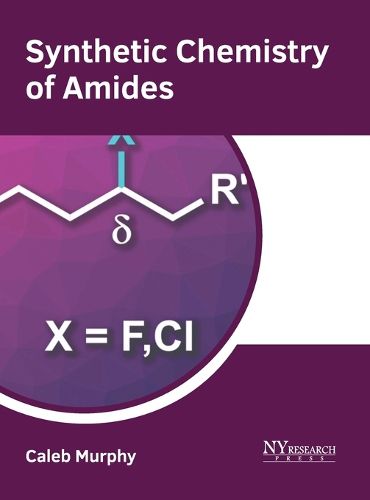Readings Newsletter
Become a Readings Member to make your shopping experience even easier.
Sign in or sign up for free!
You’re not far away from qualifying for FREE standard shipping within Australia
You’ve qualified for FREE standard shipping within Australia
The cart is loading…






Amides are functional groups in which a carbonyl carbon atom is linked by a single bond to a nitrogen atom, and either a hydrogen or a carbon atom. The general formula of amide is RC (=O)NR, R", where R, R', and R" represent organic groups or hydrogen atoms. Some common examples of amides are benazamide, acetamide, nylon, paracetamol and dimethylformamide. The amide bond is found in many naturally occurring and synthetic compounds. There are several areas of chemistry such as biochemistry, organic synthesis, polymers and drug discovery, wherein the amide groups are used as the fundamental functional group. Amide groups can participate in a wide variety of transformations synthetically and are particularly versatile when exposed to electrochemical conditions. This book aims to shed light on the synthetic chemistry of amides. It presents researches and studies performed by experts across the globe. A number of latest researches have been included to keep the readers up-to-date with the global concepts in this area of study.
$9.00 standard shipping within Australia
FREE standard shipping within Australia for orders over $100.00
Express & International shipping calculated at checkout
Amides are functional groups in which a carbonyl carbon atom is linked by a single bond to a nitrogen atom, and either a hydrogen or a carbon atom. The general formula of amide is RC (=O)NR, R", where R, R', and R" represent organic groups or hydrogen atoms. Some common examples of amides are benazamide, acetamide, nylon, paracetamol and dimethylformamide. The amide bond is found in many naturally occurring and synthetic compounds. There are several areas of chemistry such as biochemistry, organic synthesis, polymers and drug discovery, wherein the amide groups are used as the fundamental functional group. Amide groups can participate in a wide variety of transformations synthetically and are particularly versatile when exposed to electrochemical conditions. This book aims to shed light on the synthetic chemistry of amides. It presents researches and studies performed by experts across the globe. A number of latest researches have been included to keep the readers up-to-date with the global concepts in this area of study.